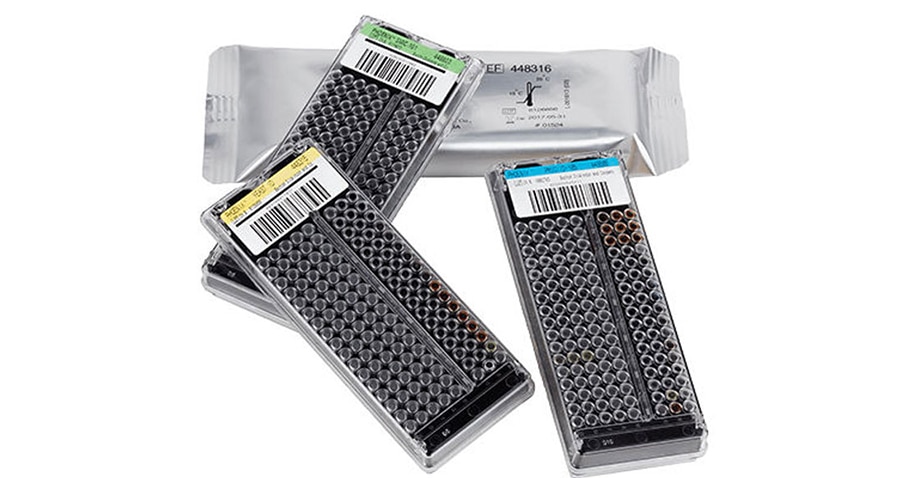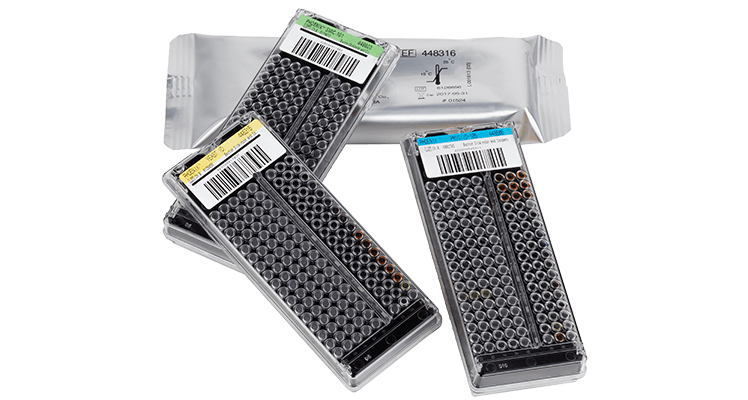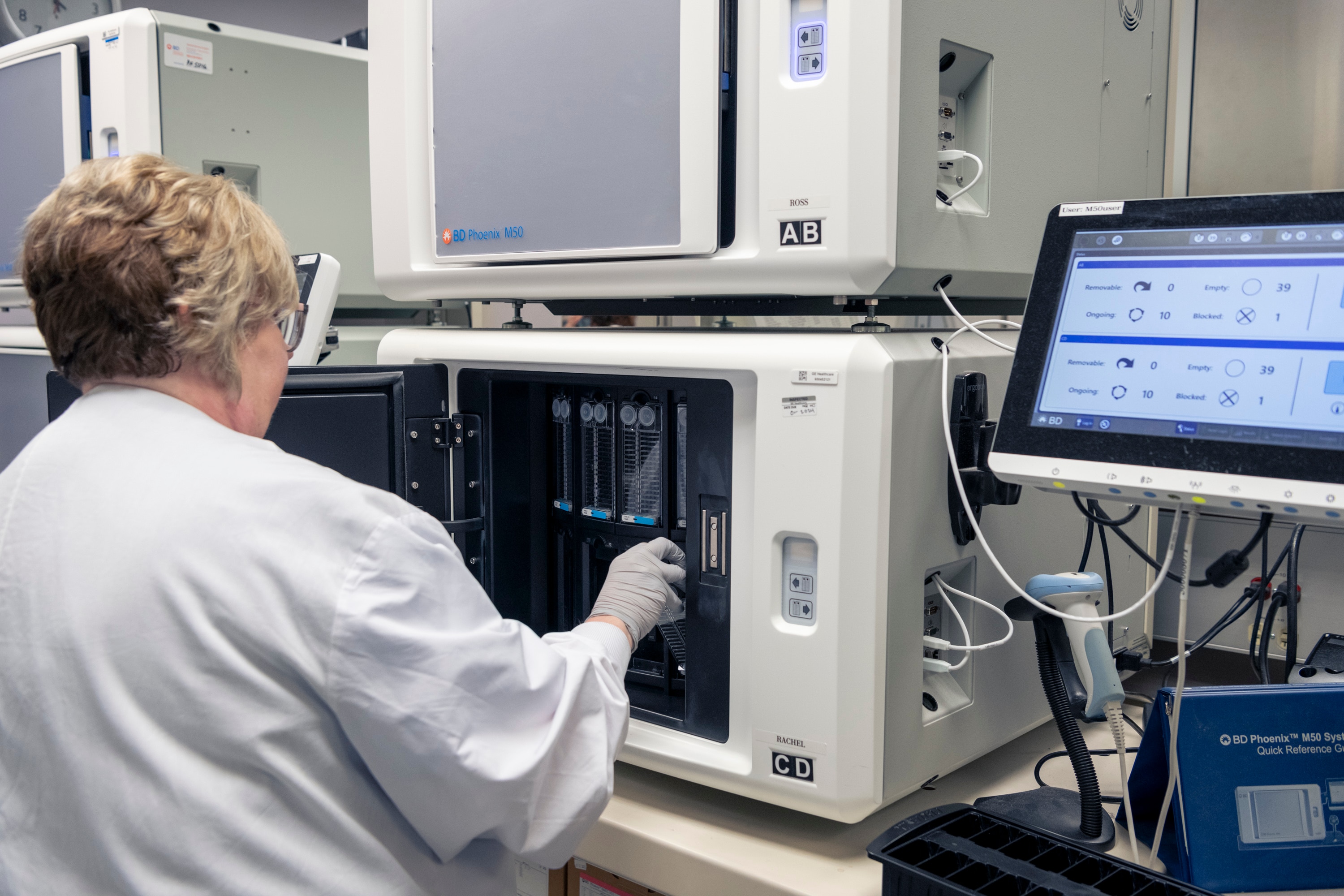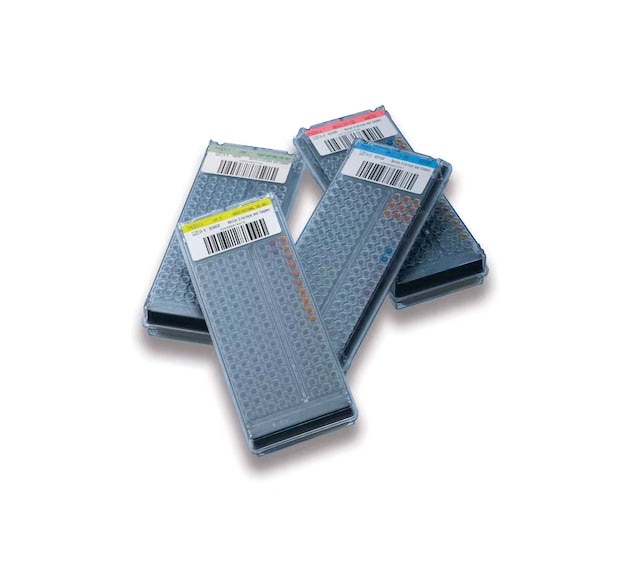-
BD Phoenix™ NMIC-311 panel
SKU/REF 449452
-
BD Phoenix™ Emerge™ NMIC-305 + 9-well CPO detect panel
SKU/REF 449294
-
BD Phoenix™ Emerge™ NMIC-306 + 9-well CPO detect panel
SKU/REF 449292
-
BD Phoenix™ NMIC/ID-307 + 2-well CPO detect panel
SKU/REF 449289
-
BD Phoenix™ NMIC-307 panel
SKU/REF 449283
-
BD Phoenix™ NMIC/ID-308 + 2-well CPO detect panel
SKU/REF 449282
-
BD Phoenix™ NMIC-308 panel
SKU/REF 449065
-
BD Phoenix™ Emerge™ PMIC-110 panel
SKU/REF 449036
-
BD Sensi-Disc™ Novobiocin NB-5, 1 Ea
SKU/REF 448935
-
BD Sensi-Disc™ Linezolid LZD-30, 1 Ea
SKU/REF 448911
-
BD Phoenix™ SMIC-101 panel
SKU/REF 448803
-
BD Phoenix™ SMIC/ID-101 panel
SKU/REF 448802
-
BD Phoenix™ PMIC/ID-109 panel
SKU/REF 448609
-
BD Phoenix™ PMIC/ID-108 panel
SKU/REF 448608
-
BD Phoenix™ PMIC/ID-107 panel
SKU/REF 448607
-
BD Phoenix™ PMIC/ID-106 panel
SKU/REF 448606
-
BD Phoenix™ PMIC-109 panel
SKU/REF 448419
-
BD Phoenix™ PMIC-108 panel
SKU/REF 448418
-
BD Phoenix™ PMIC-107 panel
SKU/REF 448417
-
BD Phoenix™ PMIC-106 panel
SKU/REF 448416
-
BD Phoenix™ yeast ID panel
SKU/REF 448316
-
BD Phoenix™ PID panel
SKU/REF 448008
-
BD Phoenix™ NID panel
SKU/REF 448007
BD Phoenix™ Panels
Timely and accurate detection of known and emerging antimicrobial resistance.1-6


- Overview
- Applications
- Products & Accessories
- EIFU & Resources
BD Phoenix™ panels, when used with the BD Phoenix™ M50, provide timely and accurate identification and susceptibility results for most clinically significant aerobic and facultative anaerobic Gram-negative and Gram-positive bacteria, as well as identification of yeast and yeast-like organisms.1-6
BD Phoenix™ panels require no refrigeration, are leak resistant, and are available in a variety of formats including identification-only, susceptibility-only, and combination of identification and susceptibility panels, for use with the BD Phoenix™ M50 Automated Microbiology System.

Microorganism identification with BD Phoenix™ panels
The BD Phoenix™ identification-only panels as well as combination identification and antimicrobial susceptibility panels use 51 wells for biochemical tests to identify most clinically significant bacteria and yeast.

Susceptibility testing with BD Phoenix™ panels
The standard antimicrobial susceptibility testing-only panels and combination ID/AST panels use 85 wells for antimicrobial dilutions. The BD Phoenix™ Emerge™ panel leverages 136 wells for susceptibility testing. Detectable antimicrobial resistance markers include* methicillin-resistant Staphylococcus aureus (MRSA), mecA-mediated resistance, vancomycin-resistant S. aureus (VRSA) and Enterococcus spp. (VRE), extended-spectrum β-lactamase (ESBL)-producing organism, high-level aminoglycoside resistant (HLAR) Enterococcus and Streptococcus spp., carbapenemase producing organism (CPO), and inducible clindamycin resistance (iMLSb).
*Non-exhaustive list. Depending on BD Phoenix™ panel type and organism identification.

BD Phoenix™ Emerge™ Panels
The BD Phoenix™ Emerge™ Gram-negative and Gram-positive panels offer 136 wells for susceptibility testing, allowing for additional antimicrobial dilutions or additional drugs, to provide the foundation for the detection of emerging resistance.

Detecting carbapenamase-producing organisms (CPOs)
The BD Phoenix™ CPO detect test, offered on certain Gram negative panels, is currently the only phenotypic test on an automated AST system that provides CPO detection and Ambler classification.
This test is available in three panel configurations that allow labs to test for CPOs as part of routine susceptibility testing:
- 2-well configuration—detection of carbapemenase in Enterobacterales, Pseudomonas aeruginosa, and Acinetobacter baumannii
- 6-well configuration—detection of carbapemenase in Enterobacterales, P. aeruginosa, and A. baumannii and Ambler classification (A, B or D) in Enterobacterales
- 9-well configuration—detection and Ambler classification of the carbapemenase in Enterobacterales, P. aeruginosa, and A. baumannii.

Bloodstream Infection Solution

BD Clinical and Lab Support
- The BD Phoenix™ system offers identification-only panels and combination ID/AST panels, using 51 wells for identification substrates.
- The instrument can provide rapid identification of most clinically significant Gram-negative and Gram- positive bacteria, as well as yeast.
- The BD Phoenix™ system offers 85 wells for antimicrobial dilutions on standard AST-only panels and combination ID/AST panels, and 136 wells on the BD Phoenix™ Emerge™ panel.
- The instrument can provide rapid susceptibility results for most clinically significant Gram-negative and Gram-positive bacteria.
- The BD Phoenix™ system panels test for several resistance markers*such as**:
- Gram-positive bacteria
- HLAR—High Level Aminoglycoside Resistant Enterococcus
- iMLSb—Inducible Clindamycin Resistance
- MRSA—based on Oxacillin Interpretation with Staphylococcus species
- mecA - detection in mecA-mediated resistance Staphylococcus Aureus
- BL-Staphylococcus ß-Lactamase (Nitrocefin-based test)
- VRSA—Vancomycin-Resistant Staphylococcus Aureus
- VRE—based on Vancomycin interpretation
- Gram-negative bacteria
- CPO—Carbapenemase Producing Organism
- ESBL—offered on Gram-negative panels and requires no additional disc diffusion or E-Test confirmation
- Gram-positive bacteria
* Depending on BD Phoenix™ panel type and organism identification.
- The BD Phoenix™ CPO detect test, available on certain BD Phoenix™ Gram-negative panels, provides information, including Ambler classification, to help guide clinicians in their treatment decisions.
- This test is available in two-panel configurations that allow microbiology labs to test for CPOs as part of routine susceptibility testing on BD Phoenix™ panels:
- 2-well configuration—provides detection of Carbapenemase-producing organisms in Enterobacteriaceae, Pseudomonas aeruginosa and Acinetobacter baumannii
- 9-well configuration—provides detection of Carbapenemase-producing organisms and Ambler classification (A, B or D) in Enterobacteriaceae, Pseudomonas aeruginosa and Acinetobacter baumannii
- The BD Phoenix™ CPO detect test is currently the only phenotypic test on an automated AST system that provides CPO detection and Ambler classification.
- On average, the BD Phoenix™ CPO detect test detects and classifies CPOs from isolated colonies within 6 to 11 hours**.
**BD internal studies—data on file
Our collection of literature on industries and on our offerings gives you information you can use to continue striving for excellence.
We support the healthcare industry with market-leading products and services that aim to improve care while lowering costs. We host and take part in events that excel in advancing the world of health™.
The BD Learning Academy offers a centralized repository of BD product training, education, and the ability to connect courses to your LMS.
We promote clinical excellence by providing various resources on best practices, clinical innovations and industry trends in healthcare.
- BD Phoenix™ M50 Automated Microbiology System User's Manual (500008930).
- Carey RB et al. Failure of Automated Systems to Detect Vancomycin-Resistant Staphylococcus aureus. Abstract presented at the Interscience Conference on Antimicrobial Agents and Chemotherapy (ICAAC), Washington, DC, 2004.
- Tenover FC et al. Emerg Infect Dis. 2006;12(8):1209–13.
- Kulah C et al. BMC Infect Dis. 2009;9:30.
- Mittman SA et al. J Clin Microbiol. 2009;47(11):3557–61.
- Woodford N et al. J Clin Microbiol. 2010;48(8):2999–3002.
- BD™ Bruker MALDI Biotyper CA System User Manual (8603291).
- Saffert RT et al. J Clin Microbiol. 2011;49(3):887–92.
- Knabl L et al. Lett Appl Microbiol. 2021;73(1):2–8.
- Watanabe N et al. J Infect Chemother. 2022;28(4):563–8.
- Accelerate PhenoTest BC kit Instructions for Use (LBL000172).


